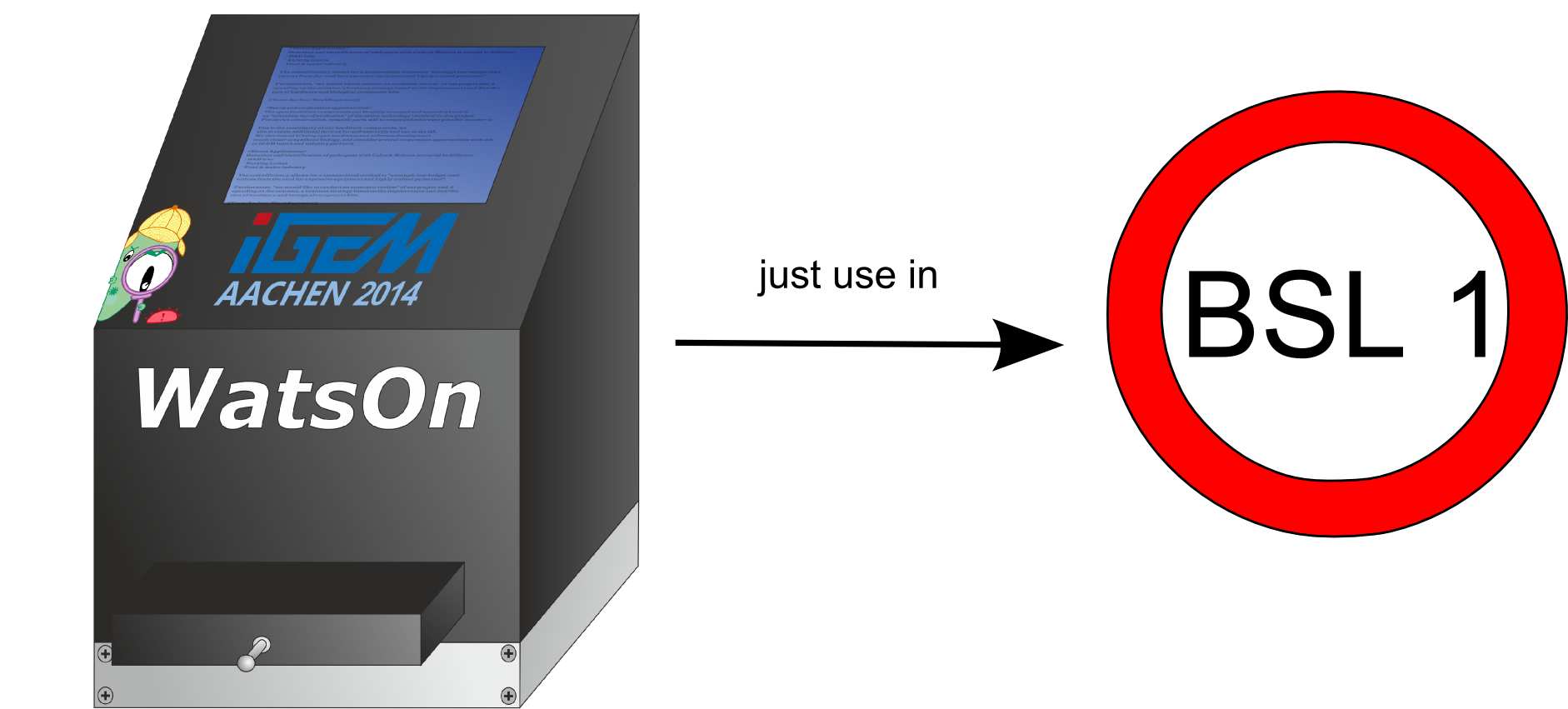Team:Aachen/Safety
From 2014.igem.org
(Difference between revisions)
(→Safety) |
|||
| Line 9: | Line 9: | ||
In general, we developed and designed the measurement device as '''closed system''' for a better safety handling. This way, neither the sampled pathogens nor the genetically modified sensor cells can escape our biosensor unit. For the detection, we are using one-time usage sampling and sensor chips which can be disposed of after '''autoclaving or irradation''' with strong UV light. Moreover, the electronic components are in a separate compartment and inaccessible for the user, preventing electric shock or other injuries. | In general, we developed and designed the measurement device as '''closed system''' for a better safety handling. This way, neither the sampled pathogens nor the genetically modified sensor cells can escape our biosensor unit. For the detection, we are using one-time usage sampling and sensor chips which can be disposed of after '''autoclaving or irradation''' with strong UV light. Moreover, the electronic components are in a separate compartment and inaccessible for the user, preventing electric shock or other injuries. | ||
| + | |||
| + | {{Team:Aachen/Figure|Aachen_Security_WatsOn.png|title=Biosafety level for ''WatsOn''|subtitle=Don't forget to use ''WatsOn'' in laboratoris with the biosafty standard 1 only!|width=500px}} | ||
To detect ''P. aeruginosa'' cells, a sampling agar chip is slightly pressed against the solid surface to be tested. Afterwards, the sampling chip is immediately introduced into our measurement device and will not be removed until the detection is finished and the chips have been disinfected. The sensor chips must be handled in '''S1 environments only''' since they contain genetically modified ''E. coli''. However, once introduced into the measurement device, the sensor chips, too, will not be removed before disinfection. The living cells inside the measurement device are effectively killed after a measurement by '''using desinfectants''' such as Bacillol. For this procedure, the drawer of the measurement device is opened and Bacillol is poured over the sampling and sensor chips. Afterwards, both chips can be autoclaved and disposed. The whole lining of the measurement device is built from plastic so that it can be disinfected easily. | To detect ''P. aeruginosa'' cells, a sampling agar chip is slightly pressed against the solid surface to be tested. Afterwards, the sampling chip is immediately introduced into our measurement device and will not be removed until the detection is finished and the chips have been disinfected. The sensor chips must be handled in '''S1 environments only''' since they contain genetically modified ''E. coli''. However, once introduced into the measurement device, the sensor chips, too, will not be removed before disinfection. The living cells inside the measurement device are effectively killed after a measurement by '''using desinfectants''' such as Bacillol. For this procedure, the drawer of the measurement device is opened and Bacillol is poured over the sampling and sensor chips. Afterwards, both chips can be autoclaved and disposed. The whole lining of the measurement device is built from plastic so that it can be disinfected easily. | ||
Revision as of 12:56, 14 October 2014
 "
"

